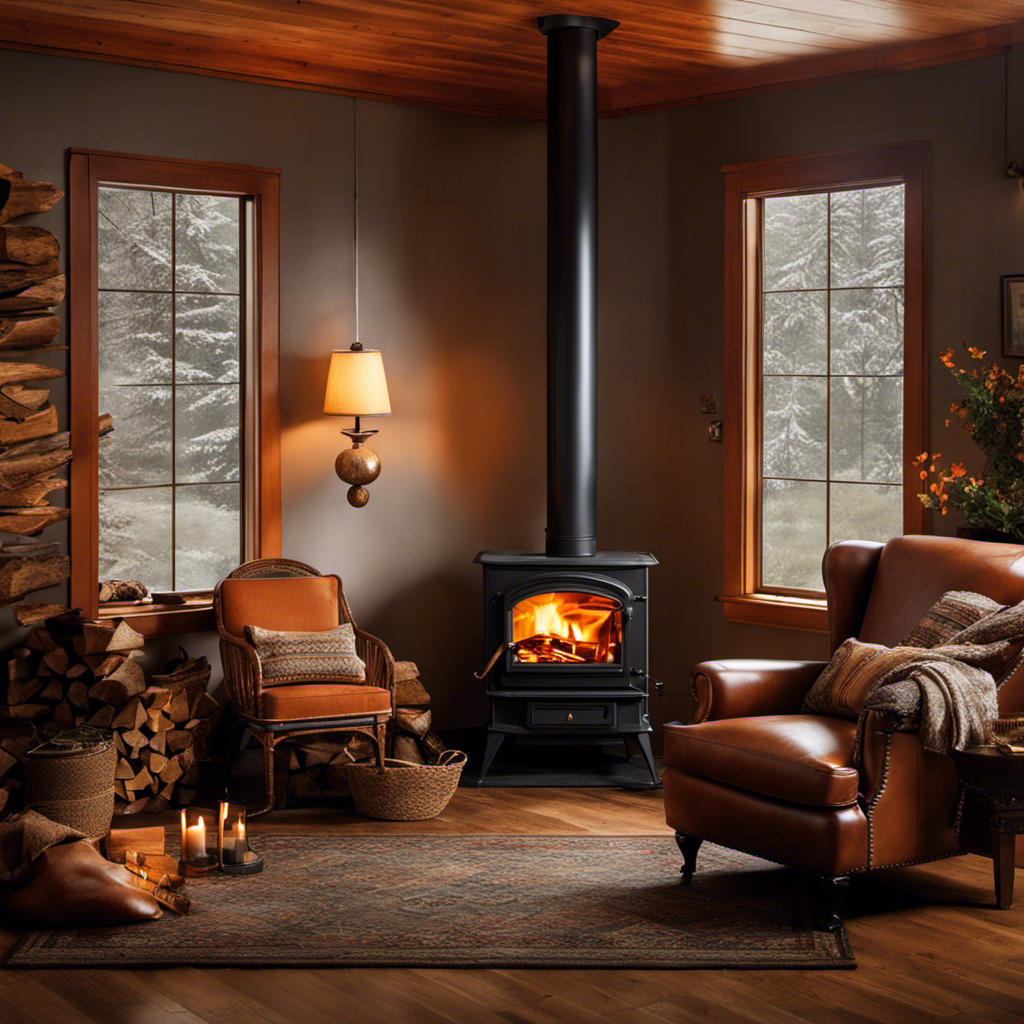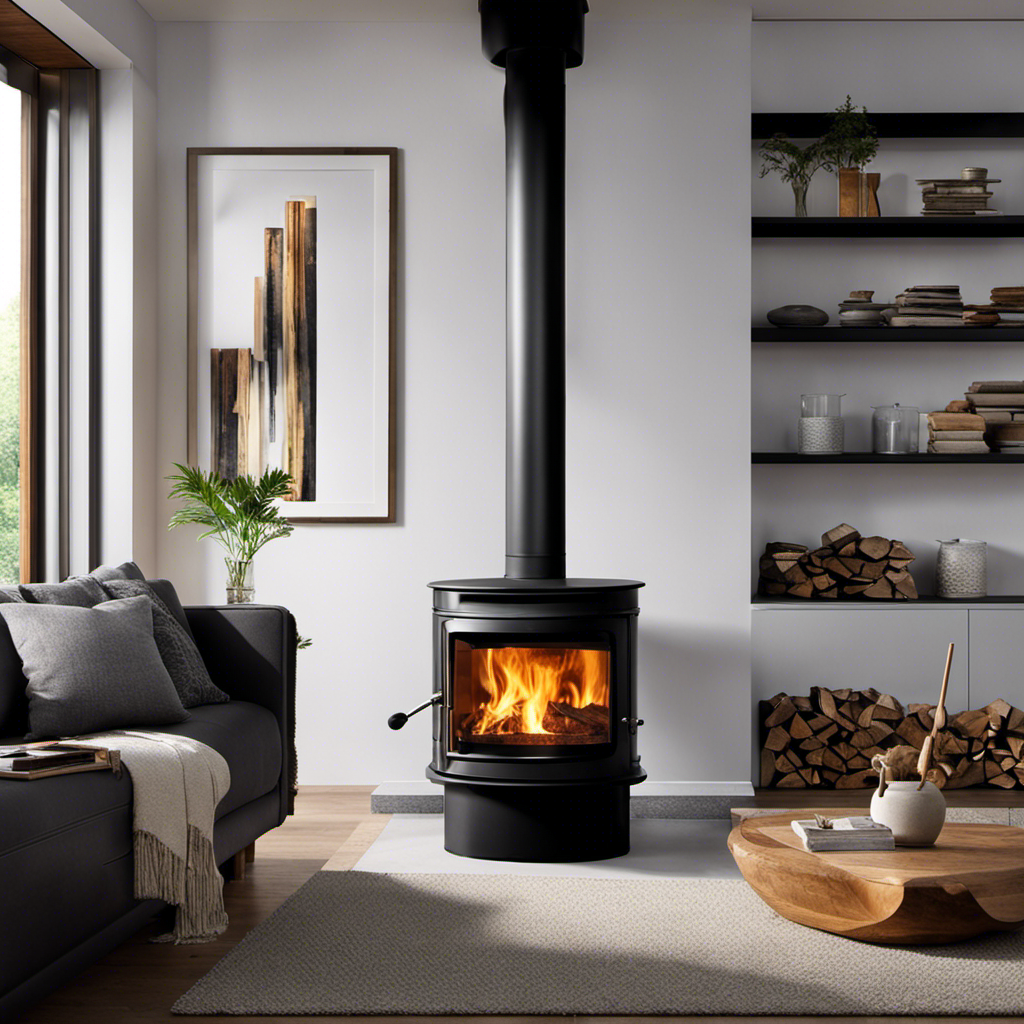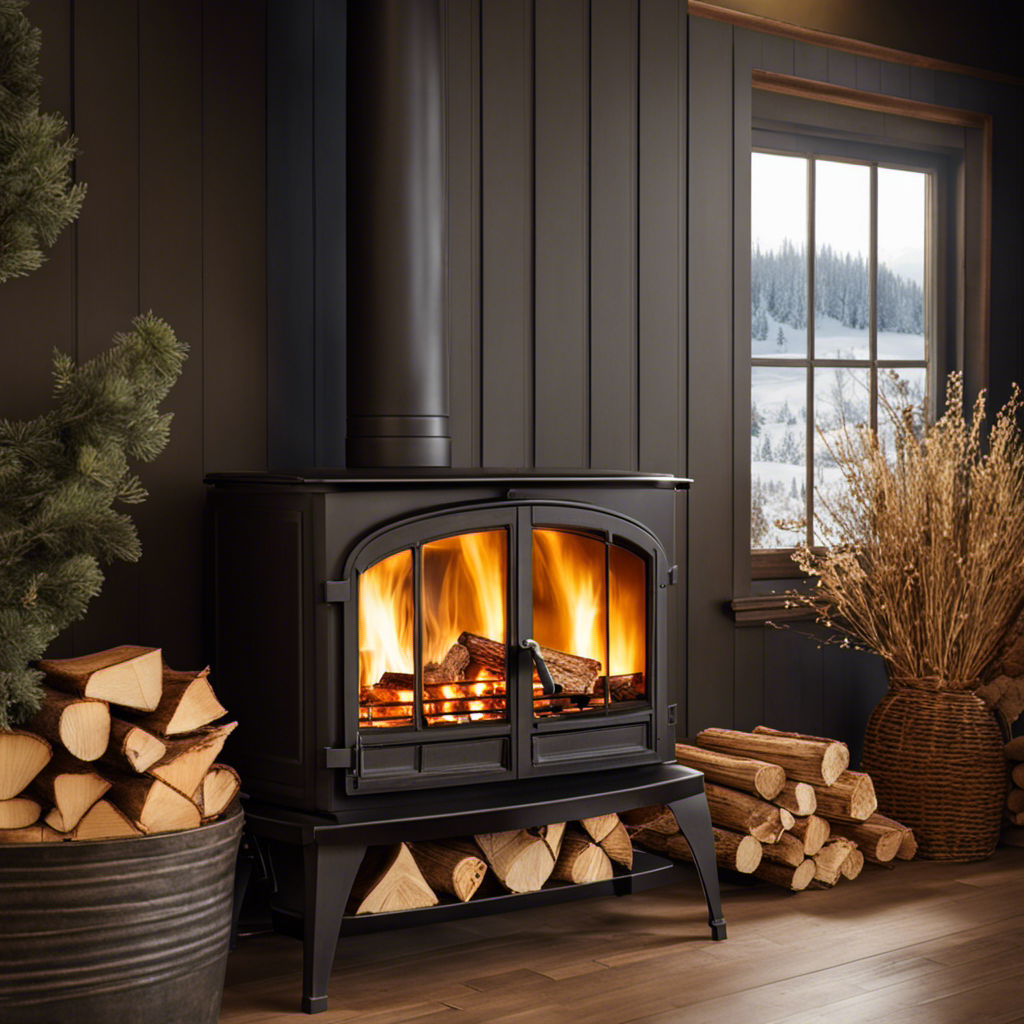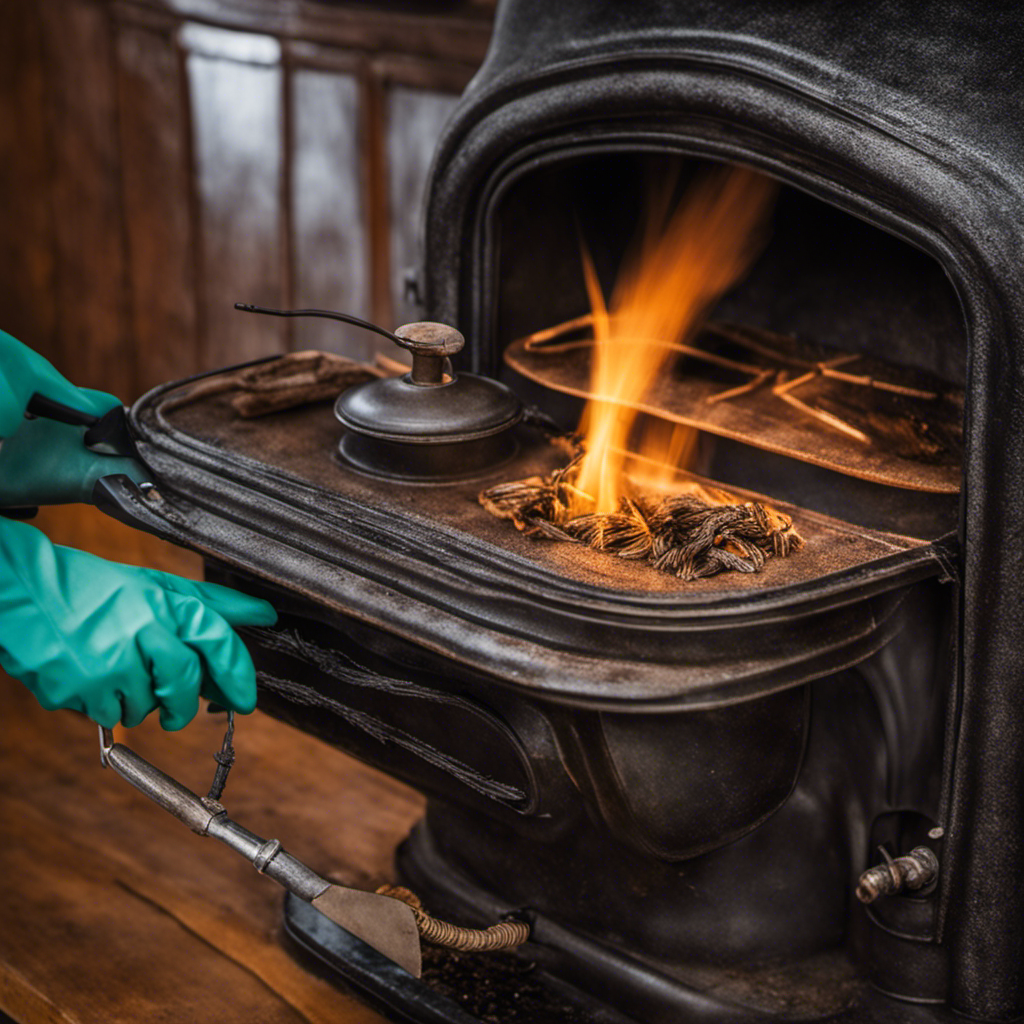
Looking at the dense, dark mark marring the glass of my wood stove, I can’t help but ask myself, ‘Why does it have to happen like this every single time?’ This predicament originates from the intriguing realm of creosote accumulation, issues with dampness and condensation, inadequate air flow, burning wood that hasn’t been properly dried, and the overall quality of the fuel being utilized.
In this article, we’ll delve into the reasons behind the mysterious blackening of our wood stove glass and explore ways to prevent it.
So, let’s embark on this journey to unlock the secrets of a sparkling wood stove.
Key Takeaways
- Creosote buildup is a common cause of blackened wood stove glass and should be regularly cleaned by a professional.
- Condensation inside the wood stove can also cause the glass to turn dark, and adjusting the air intake and burning seasoned firewood can help minimize this.
- Improper airflow can lead to increased condensation and a dirty appearance on the glass, so it is important to regulate air vents and dampers.
- Burning unseasoned wood and using low-quality fuel can result in incomplete combustion, increased soot production, and a higher risk of blackened glass.
Creosote Buildup
I think the blackness on my wood stove glass is due to creosote buildup. Creosote is a tar-like substance that forms when wood is burned. It can accumulate on the inside of the chimney and the glass of the wood stove.

To prevent creosote buildup, regular chimney maintenance is essential. This includes having the chimney inspected and cleaned by a professional at least once a year.
When it comes to cleaning the glass, there are a few techniques that can be used. One method is to mix equal parts water and vinegar and spray it onto the glass. Let it sit for a few minutes, then wipe it off with a damp cloth. Another technique is to use a commercial glass cleaner specifically designed for wood stoves.
Regular chimney maintenance and proper glass cleaning techniques can help prevent creosote buildup and keep your wood stove glass clean.
Now, let’s move on to the next topic: moisture and condensation.
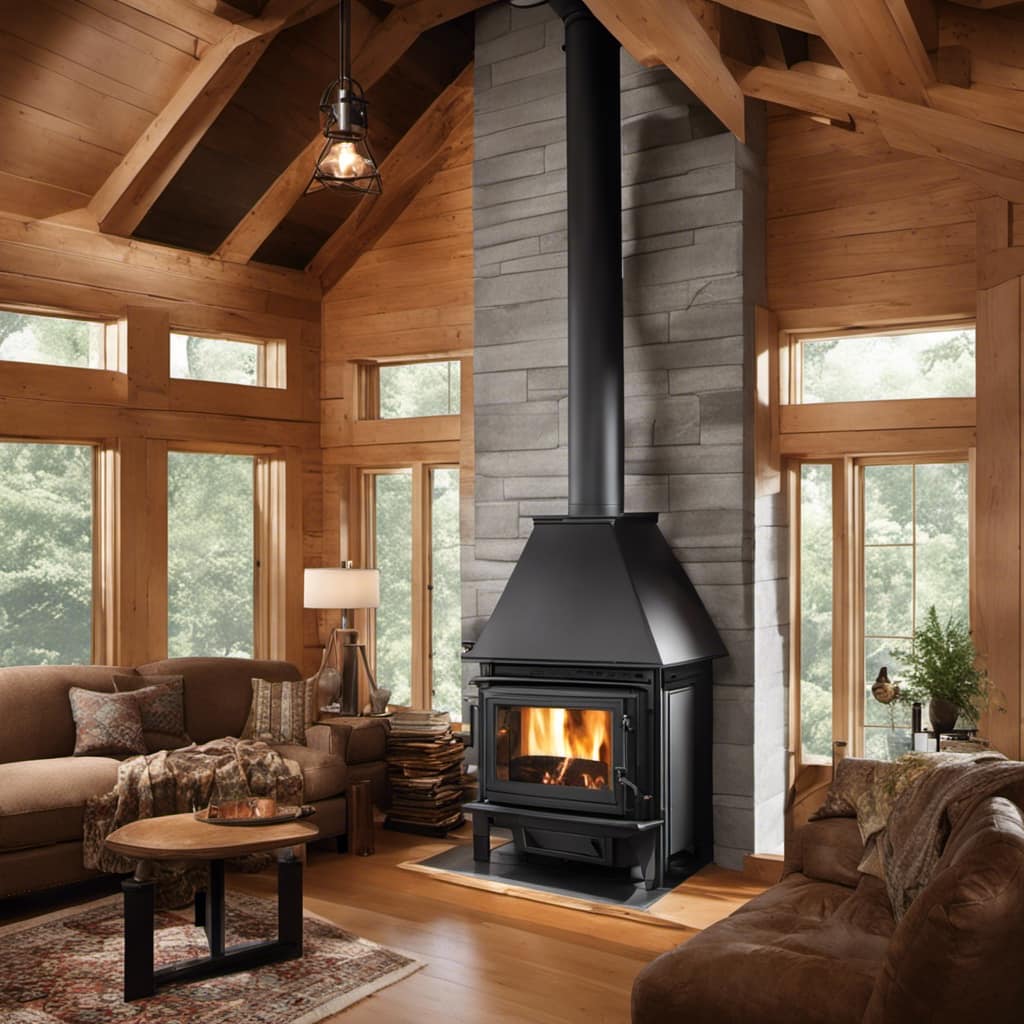
Moisture and Condensation
The condensation inside causes the glass on my wood stove to turn dark. This is a common issue that many wood stove owners face. Fortunately, there are techniques to prevent condensation and keep the glass clean.
Here are three effective methods:
-
Adjust the air intake: One way to reduce condensation is by adjusting the air intake on your wood stove. Increasing the airflow can help burn off excess moisture, preventing it from accumulating on the glass.
-
Use seasoned firewood: Burning seasoned firewood, which has been properly dried for at least six months, can help minimize condensation. Wet or unseasoned wood produces more moisture when burned, leading to increased condensation on the glass.
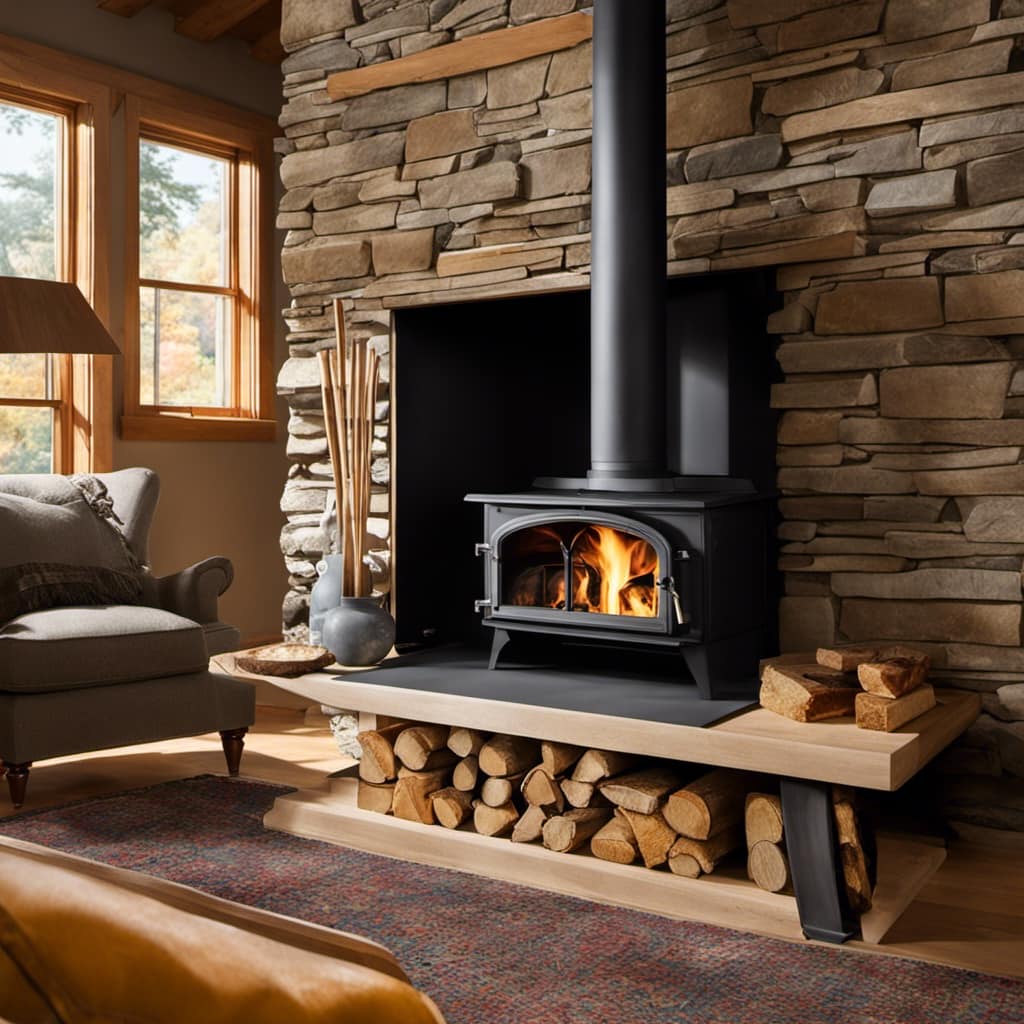
-
Regular cleaning: To keep the glass clear, it’s important to clean it regularly. Use a specialized stove glass cleaner or a mixture of vinegar and water to remove any soot or residue. Gently scrub the glass with a non-abrasive cloth or sponge, and then wipe it dry with a clean, lint-free cloth.
Improper Airflow
Improper airflow can lead to increased condensation and a dirty appearance on the glass of a wood stove. When the airflow isn’t properly regulated, it can cause the wood to burn inefficiently, resulting in more smoke and soot being produced. This smoke and soot can then adhere to the glass, creating a black and dirty layer.
To prevent this, it’s important to ensure that the air vents and dampers are open to allow for proper air circulation. Regular cleaning of the glass is also vital to maintain its appearance. Cleaning techniques such as using a glass cleaner specifically formulated for wood stoves or a mixture of vinegar and water can effectively remove the soot and restore the glass to its original clarity.
Proper glass maintenance, combined with good airflow control, can help keep your wood stove glass clean and clear.

Burning Unseasoned Wood
When burning unseasoned wood, it can create excessive smoke and decrease the efficiency of the fire. This is because unseasoned wood contains a higher moisture content, which leads to incomplete combustion. Incomplete combustion occurs when the wood doesn’t burn completely, resulting in the production of smoke and soot.
Here are three reasons why burning unseasoned wood can lead to soot accumulation:
-
Moisture Content: Unseasoned wood has a moisture content of around 50%, which prevents it from burning efficiently. The excess moisture causes the fire to smolder, producing more smoke and soot.
-
Lower Heat Output: Unseasoned wood releases less heat when burned due to the energy required to evaporate the moisture. As a result, the fire may not reach optimal temperatures for complete combustion, leading to increased soot formation.
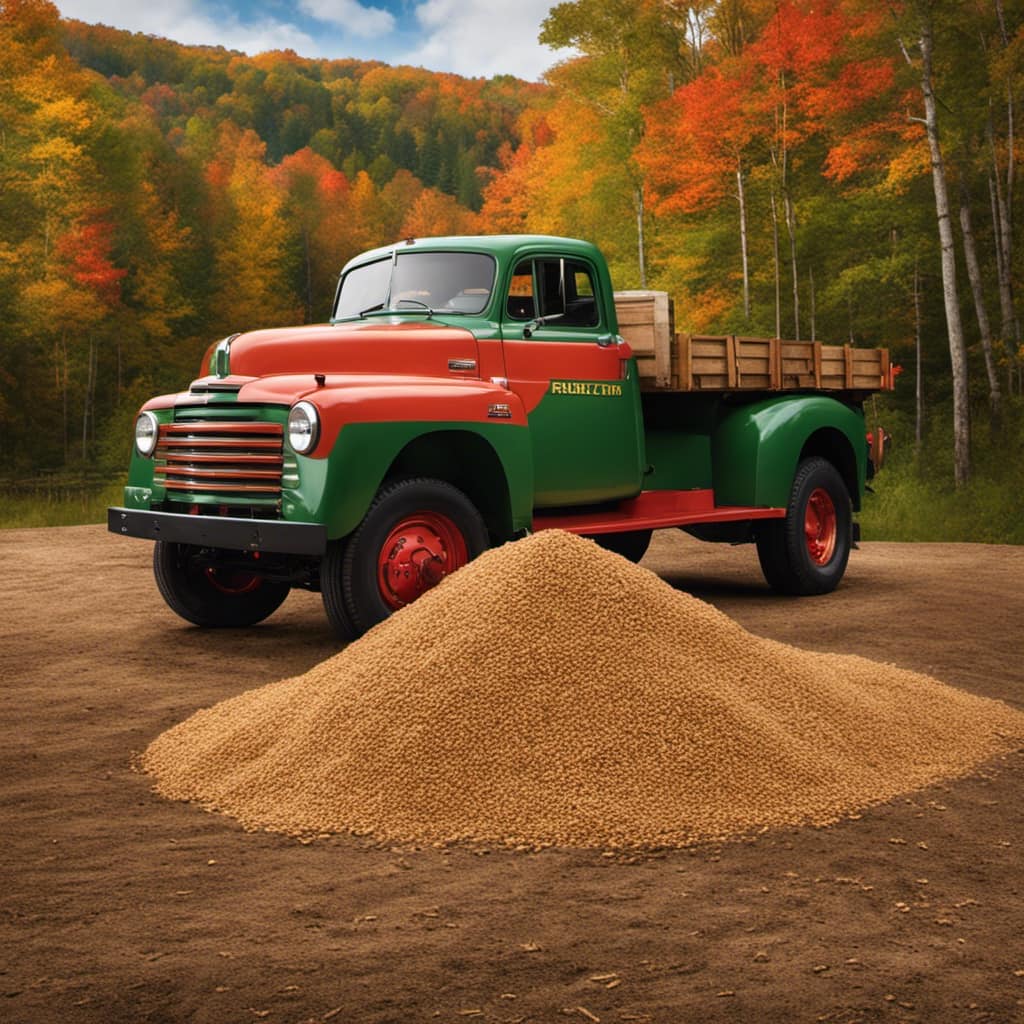
-
Creosote Buildup: The byproducts of incomplete combustion, including soot and other particles, can accumulate in the chimney or on the glass of the wood stove, causing blackening and reducing visibility.
Burning unseasoned wood not only creates more smoke but also increases the risk of soot accumulation. To prevent this, it’s essential to use properly seasoned wood, which has a moisture content of 20% or less.
Fuel Quality
I always make sure to use high-quality fuel for my fire. It not only ensures a warm and cozy ambiance in my home, but also helps maintain the combustion efficiency of my wood stove.
When it comes to fuel quality, there are a few factors to consider. First, using properly seasoned firewood is essential. Green or wet wood contains a high moisture content, which leads to incomplete combustion and more smoke production. This can result in soot and creosote buildup on the glass of the wood stove.

Additionally, regular wood stove maintenance is crucial for optimal combustion efficiency. This includes cleaning the chimney, checking the air vents, and ensuring proper air circulation.
Frequently Asked Questions
How Often Should I Clean the Glass on My Wood Stove?
I clean the glass on my wood stove every 1-2 weeks. Black soot builds up due to incomplete combustion, high moisture content in the wood, or a restricted air supply. Regular cleaning prevents buildup.
Can I Use a Specific Type of Cleaner to Remove Black Soot From the Glass?
I can use a specific cleaner to effectively remove black soot from the glass of my wood stove. It is important to choose a cleaner that is specifically designed for this purpose to achieve the best results.
Is It Safe to Use My Wood Stove if the Glass Is Black?
Using a wood stove with blackened glass is generally safe, but it’s important to address the underlying cause of the discoloration. Possible causes include inefficient burning or improper air flow. Regular maintenance and safety precautions are crucial for optimal performance.

What Are Some Common Signs of Improper Airflow in a Wood Stove?
When troubleshooting airflow issues in a wood stove, signs of poor airflow could include weak flames, difficulty starting a fire, and excessive smoke. It is important to check the damper, air intake, and chimney for any blockages or obstructions.
How Can I Prevent Black Soot From Building up on the Glass of My Wood Stove in the Future?
To prevent black soot buildup on my wood stove glass, I clean it regularly. This helps maintain proper airflow and prevents the combustion byproducts from sticking to the glass.
Conclusion
In conclusion, the blackening of wood stove glass can be attributed to various factors such as creosote buildup, moisture and condensation, improper airflow, burning unseasoned wood, and fuel quality.
It’s important to address these issues to ensure the efficient functioning of the wood stove and prevent any potential hazards. Remember, ‘an ounce of prevention is worth a pound of cure’ when it comes to maintaining your wood stove and enjoying a cozy and safe fire.
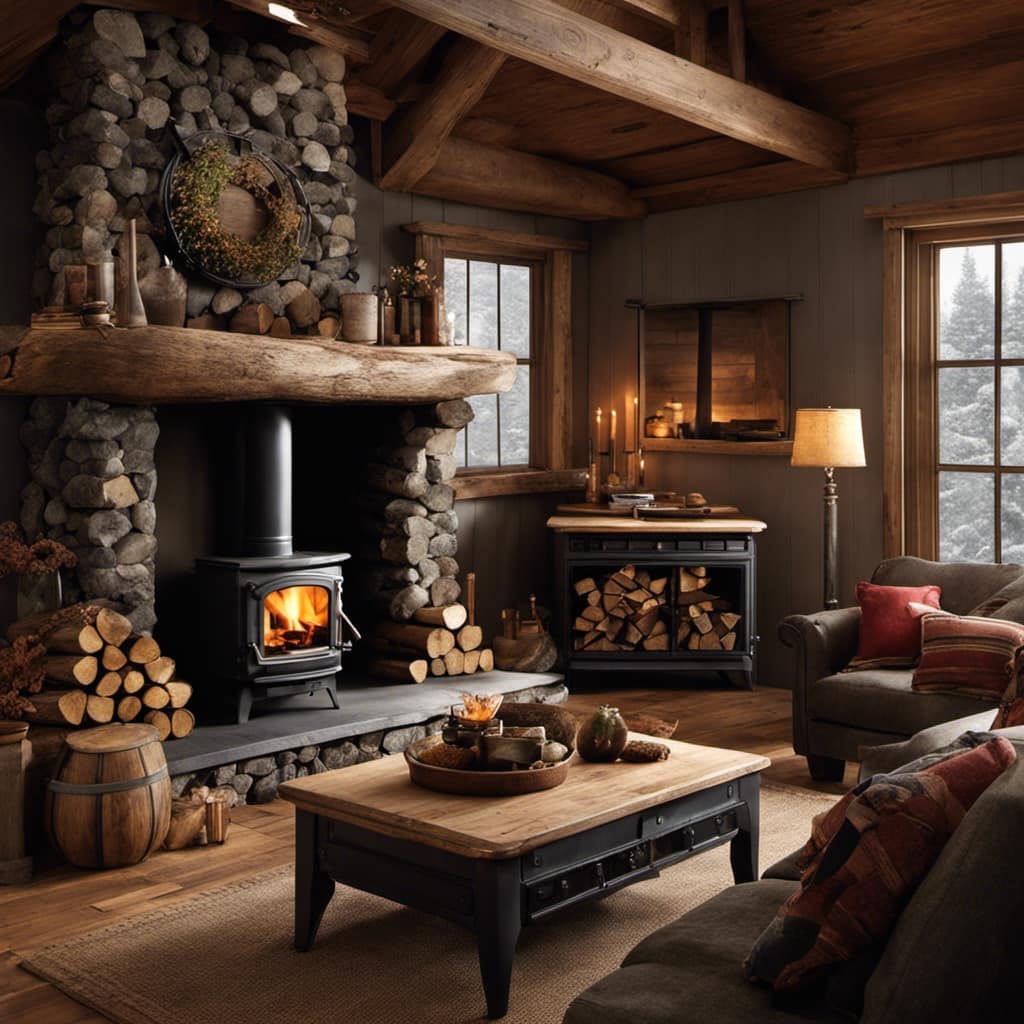
Growing up surrounded by the vast beauty of nature, Sierra was always drawn to the call of the wild. While others sought the comfort of the familiar, she ventured out, embracing the unpredictable and finding stories in the heartbeat of nature.
At the epicenter of every remarkable venture lies a dynamic team—a fusion of diverse talents, visions, and passions. The essence of Best Small Wood Stoves is crafted and refined by such a trio: Sierra, Logan, and Terra. Their collective expertise has transformed the platform into a leading authority on small wood stoves, radiating warmth and knowledge in equal measure.



